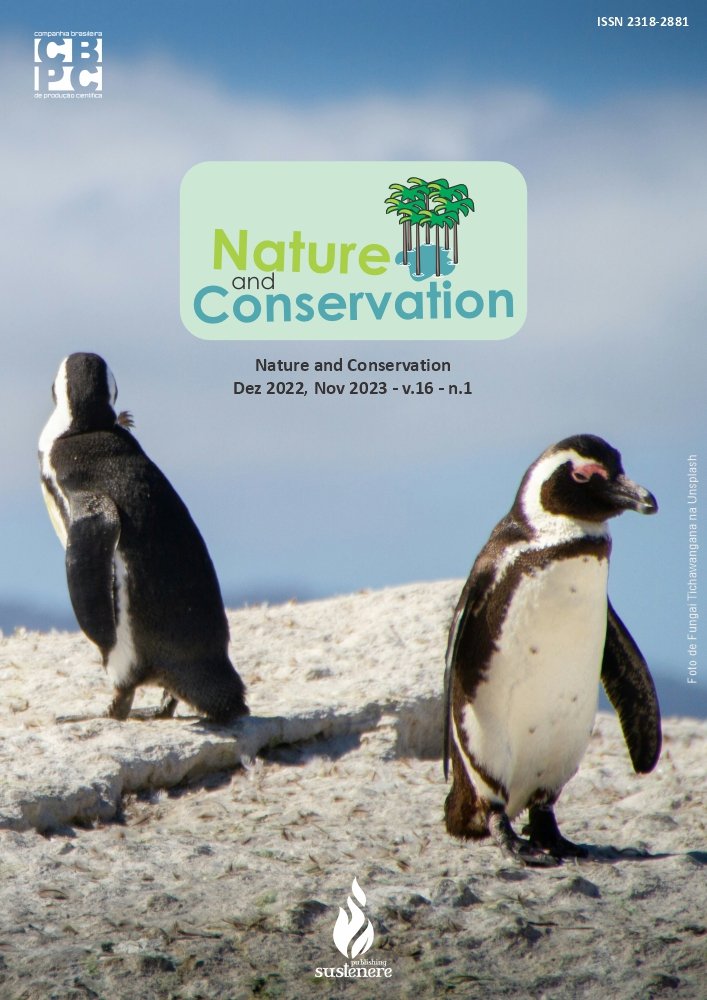Evaluation of a method to estimate radicular absorption of nitrate in rice
DOI:
https://doi.org/10.6008/CBPC2179-6858.2021.006.0001Keywords:
Nitrogen, Oryza sativa, Nutritive solutionAbstract
- Nitrogen is absorbed by the roots of plants in the form of nitrate (NO3-) and ammonium (NH4+). Under flooding conditions, there is greater availability of nitrogen in ammoniacal form, and toxicity can occur due to the excess of this ion in plants. Rice, however, given its high capacity to transport oxygen from the aerial part to the root system through aerenchyma, is able to create a condition of nitrification in the rhizosphere, allowing the balance between these two forms and thus avoiding excess toxicity of ammonium. In studies evaluating the kinetics of nitrogen absorption in rice and other species, the most used method is that of assessing the reduction in its concentration in the nutrient solution over time. However, this method presents a problem of a physiological nature, one of a statistical nature and another that is a procedural error that is usually made. From a physiological point of view, the problem that arises is that, at the root, nitrogen transporters are subject not only to a treatment, but to all the different concentrations of this element, which may affect its affinity and consequently its operation. In statistical terms, the successive evaluations in the same experimental unit lead to the autocorrelation of the residues, which goes against the independence required of them to enable the adjustment of regression models. The procedural error that is made and, in most cases, is not made explicit, is that of not replacing the volume of sample extracted from the solution with chemically pure water. Considering these aspects, and noting that there are no reports in the literature about other alternative methods in this same line of evaluation, it is proposed, with this work, to evaluate a method of kinetics of nitrate absorption in rice based on the exposure of rice plants to only a single ion concentration treatment, evaluating its content in the root system after a certain period of exposure. With that, all the problems already mentioned would be avoided. For the determination of NO3- levels, a case study was carried out using the Kjeldahl method. The method proposed in this work did not produce satisfactory results, but specifically due to the limitation of the Kjeldahl method, whose resolution (detection limit) makes it impossible to identify values ​​in the magnitude of those found in the nitrate absorption kinetics in rice. It is suggested that the proposed method be reevaluated using another method of detecting the total N content or specifically the NO3- in the roots of these plants, however, with the required resolution.
Downloads
Downloads
Published
Issue
Section
License
Copyright (c) 2021 Ibero-American Journal of Environmental Sciences

This work is licensed under a Creative Commons Attribution-NonCommercial-NoDerivatives 4.0 International License.
The CBPC - Companhia Brasileira de Produção Científica (Brazil CNPJ: 11.221.422/0001-03) the material rights of the published works. The rights relate to the publication of the work anywhere in the world, including rights to renewals, expansions and dissemination of the contribution, as well as other subsidiary rights. All electronically published works may subsequently be published in printed collections under the coordination of this company and / or its partners. The authors preserve the copyright, but are not allowed to publish the contribution in another medium, printed or digital, in Portuguese or in translation.









